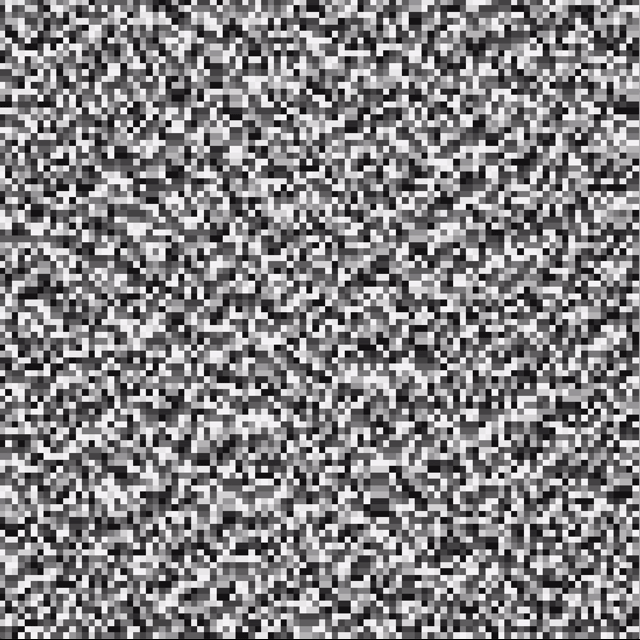Work Proofs
The work behind Jonathan Chomko's series is more than meets the eye.
Sold OutExplore ArtworksThe first tests for Proof of Work began in January of 2021. Chomko asked several of his friends to input numbers between one and nine on a keyboard with the aim of achieving randomness after 10,000 key presses by each, the resulting 100 by 100 grids revealed something unexpected. Despite the limited range of inputs and the pursuit of randomness patterns emerged in the images which made them distinguishable from one another showing the unique touch of each individual.
Jonathan then took these learnings and applied them for a workweek, creating a 100 by 100 artwork himself each day, Monday through Friday. These early studies were the first pieces in the Proof of Work series and laid the groundwork for what the series would become.
He even took these manually generated images and animated them with the pixels transitioning gradually from black to white, revealing irregularities in the generated image.
As early experiments concluded, Chomko understood the frontiers around the work he wanted to create and constructed a rigid system to abide by, ensuring accountability consistency in his own work. Each stage of Proof of Work begins with rules, with patterns and color palettes based on different human inputs.
In Binary Random, Chomko enters either zero or one onto the keyboard, creating a black or white pixel. The aim was to enter values randomly, but recognizable patterns still shine through. Chomko begins by creating a one by one grid, doubling the size each day through two by two, 4x4, and at the greatest length, ending at 512 by 512, a work that took over 12 hours to complete. Once the work can no longer be completed in a day, a series is considered completed.
Proof of Work pieces have two main components. The first is the image itself, a square artwork made up of pixels resembling color field paintings, and the second, the process video, which includes screen recording and recordings capturing the artist's hands and face throughout the entirety of the creation of the work. These process videos are always presented with the artwork and can be considered the proof referenced in the title. The third series, Red pressure has similar mechanics to blue duration, instead using a pressure sensitive smartphone screen and altering the shape based on the pressure used by the artist.
In the lead up to each series, Chomko experiments with different color palettes, exploring which are most expressive of particular input methods and which satisfy the aesthetic goals for each series.
In an age of remote work monitored by webcam and desktop surveillance. The footage of Chomko’s tapping at screens and typing on keyboards is eerily similar to the actual work experience of thousands around the world.
And though it may appear at first glance that this work is completely robotic, unable to convey the artist's touch through the limitations and systems he imposes on himself, within the hours of filling out the canvases, errors and marks are made, which are as unique to Chomko brushstrokes are to a painter.
EVEN WHEN EVERY PIECE OF ORGANIC TOUCH IS REMOVED, THE ARTIST'S INDIVIDUALITY SHINES THROUGH IN THE ARTWORK, PROVING THEIR PLACE IN THE WORK AND THE TIME GIVEN TO ACHIEVE IT.
